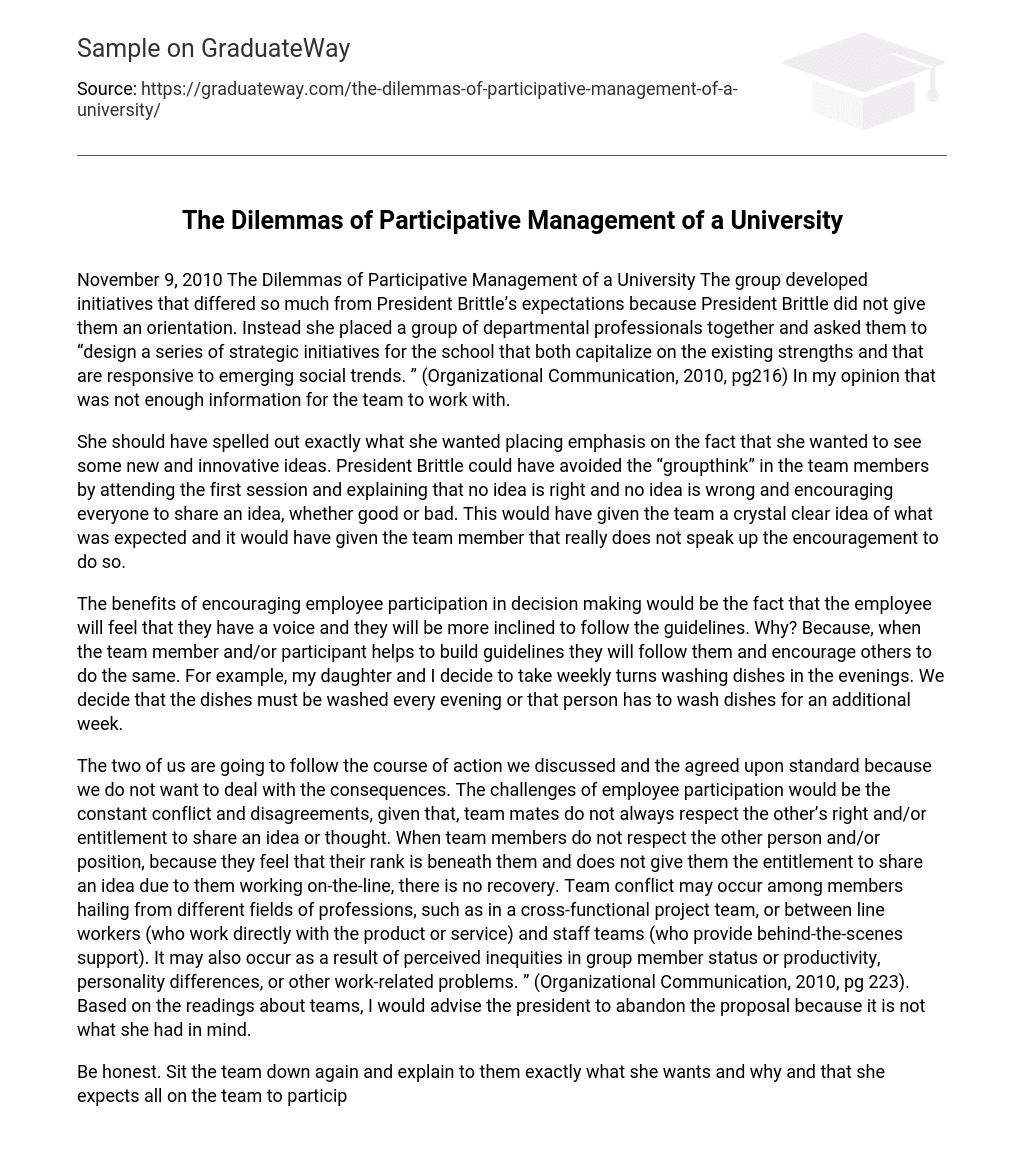The group’s initiatives differed greatly from what President Brittle had anticipated. This was largely due to the fact that she did not give them any guidance or orientation. Instead, she gathered a team of experts from different departments and told them to “create a set of strategic initiatives for the school that leverage its current strengths and address emerging social trends” (Organizational Communication, 2010, pg216). From my point of view, this lack of information was inadequate for the team to move forward.
President Brittle could have prevented “groupthink” among team members by clearly articulating the need for new and innovative ideas. Attending the initial session, Brittle could have emphasized that there are no right or wrong ideas, and encouraged every team member to contribute, regardless of quality. Such a directive would have provided a clear understanding of expectations and boosted confidence for those who are typically hesitant to speak up.
Encouraging employee involvement in decision-making has numerous advantages. It gives employees a feeling of being heard and increases their dedication to following guidelines. When employees are allowed to contribute to the creation of guidelines, they are more likely to adhere to them and inspire others to do the same. To illustrate this point, my daughter and I have established a system where we alternate washing dishes every week. We both acknowledge the importance of washing dishes daily; otherwise, the person assigned will have to continue doing so for another week.
We will adhere to the course of action and agreed upon standard to avoid the consequences. The challenges of employee participation include constant conflict and disagreements, as team members may not always respect each other’s right to share ideas. When team members do not respect each other, there is no recovery, especially if they believe their rank is superior and thus restricts others from sharing ideas due to their job position.
Team conflict can arise when individuals from various professional backgrounds work together, as in a cross-functional project team, or when there is tension between line workers (who are directly involved with the product or service) and staff teams (who offer support in the background). It can also stem from perceptions of unequal status or productivity among group members, personality differences, or other work-related issues (Organizational Communication, 2010, pg 223). After examining information on teams, I would recommend that the president reconsider the proposal as it does not align with her original intentions.
To effectively communicate with her team, she should be transparent and direct. She should reiterate her expectations and the reasons behind them, emphasizing the importance of active participation and contribution from everyone. Her goal is to generate fresh and creative ideas that align with current trends, rather than merely continuing with past practices. Additionally, she needs to address upper/mid-level managers, advising them to show respect towards frontline employees who possess the most practical experience dealing with daily challenges.
In this instance, I would encourage the use of Communication as a Strategic Control. According to Eisenberg, Goodall, and Trethway (2010), this communication pattern acknowledges the importance of control, regardless of personal relationships, in order to achieve greater clarity. Therefore, by implementing these particular changes, Ms. Brittle can expect to achieve her desired outcome.
References
- Eisenberg, Eric. M. , Goodall Jr. , H. L. , & Trethewey, A. (2010). Organizational Communication: Balancing Creativity and Constraint, 6th Edition; Boston: Bedford/St. Martin’s





